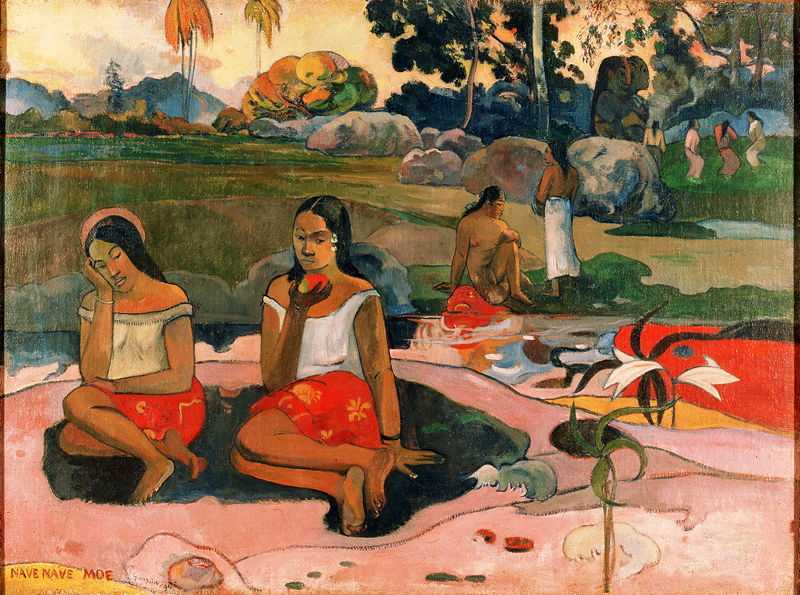1. Gauguin’s early years
Born in Paris in 1848, Gauguin’s early life was tumultuous.
Unlike the vast majority of Impressionist artists, his childhood was not spent in France and he did not come to painting until much later in life.
Flight to Peru
When he was just six months old, Gaugin’s family fled to Lima in Peru. His father, Clovis Gauguin, was a journalist; and political upheaval in France meant that he was no longer able to continue working. He made a plan to establish his own newspaper outside of France.
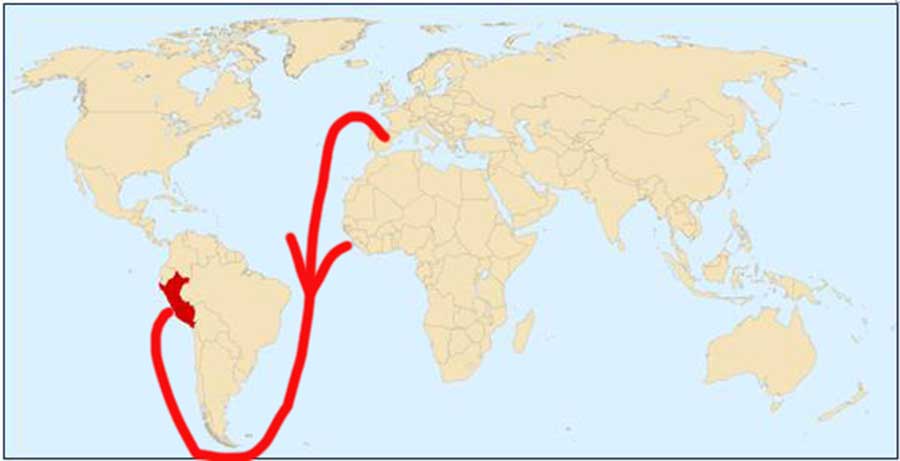
Paul’s mother, Alina Maria Chazal, was the daughter of the socialist leader and feminist activist Flora Tristan. Tristan’s father came from a noble Peruvian family and it was this link which saw the young family make the journey to Lima.
Personal tragedy
During the voyage, Gauguin's father Clovis died suddenly from a heart aneurysm whilst at a stop at a Chilean fort near Antarctica. This was shortly after Paul’s first birthday.
As a result, Paul, his sister Mari and his mother were forced to bury Clovis’ body there and continue on their way to Lima alone. Upon their arrival, they went to live with Alina’s paternal family who were wealthy and prominent politicians.
One-eyed veil
One of Gauguin’s earliest memories was of his mother wearing the traditional street dress of Limeñan women, and the one-eyed veil in particular.
The saya y manto would have been different to anything worn in France at that time. Indeed, Alina’s mother wrote about the freedom that the saya y manto afforded women as they could leave home and be completely anonymous, giving them the opportunity to move through the world as they wished without fear of recognition and retribution.

Fines imposed by the Catholic church and Spanish settlers were ineffective at preventing women from adopting the dress.
Alina would have worn this clothing frequently and it is perhaps this earliest influence that would draw Gauguin towards portrayals of exoticised female figures throughout his life.
Peruvian art
Whilst in Lima, Gauguin would also have been exposed to pre-Hispanic Peruvian art including ceramics from the Moche and Nazca cultures.
He may have also seen silver figurines and sculptures made by the Inca. When he returned home, he was exposed to an entirely different style of European art. As a result, before he even lifted a paintbrush, Gauguin’s head had been filled with hundreds of works of art that were varied, contrasting and rich.
Return to France
At the age of seven, the family moved back to France, settling in Orléans where Clovis had been raised.
They lived with Paul’s uncle, Isidore Gauguin, and the young boy gradually learnt French, though he preferred Peruvian Spanish. After an unsuccessful three years at a Catholic boarding school, he decided to become a pilot’s assistant in the merchant navy.
Later, Gauguin joined the French navy and travelled extensively around the world, from South America to the Arctic circle to the Black Sea. It was whilst he was deployed in the Caribbean that his mother died.
Gaugin the stockbroker
Gauguin returned to Paris once more in 1871 and became a stockbroker, helped by his mother’s partner and his legal guardian, Gustave Arosa.
Arosa was the first person to introduce Gauguin to the world of art. He was a wealthy art patron and had a sizeable collection of paintings including pieces by Camille Corot and Eugène Delacroix. Historians have cited Arosa’s influence on Gauguin as the single most important source of artistic inspiration in the young man’s life.
A fellow stockbroker, Émile Schuffenecker, became Gauguin’s first informal painting tutor and lifelong friend. This was just as well - Gauguin had a habit of upsetting almost everyone he encountered!
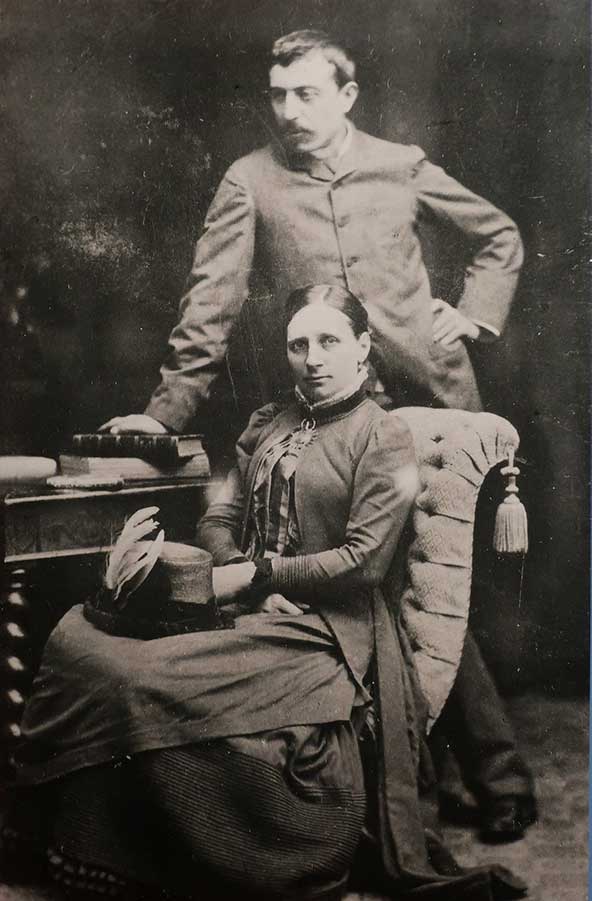
For the next 11 years, Gauguin worked as a stockbroker himself. He also got married and had five children. After losing his job in the 1882 stock market crash, he moved to Denmark with his wife, Mette Sophie Gad, and tried in vain to become a tarpaulin salesman.
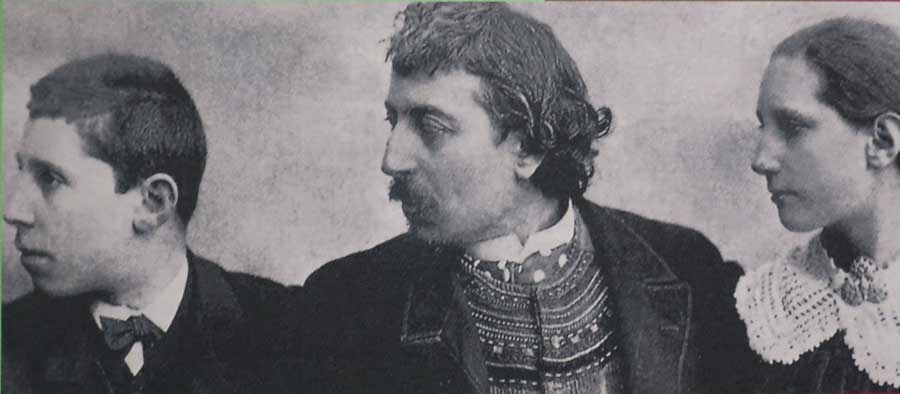
Eventually, he was forced to move back to Paris in 1885, leaving his wife and children behind. He lost all contact with them in 1891.
2. Gauguin and the Impressionists
Gauguin’s early biography is an intriguing foundation for the start of his artistic career.
It also provides some clues as to how he ended up in French Polynesia, building the fantasy world that would define his life long after his death.
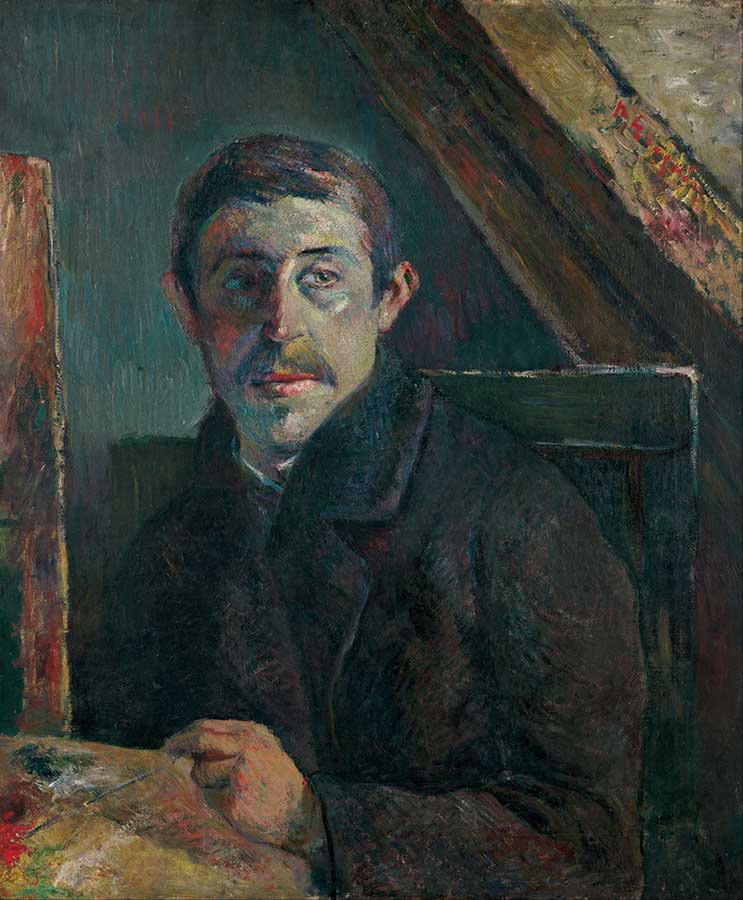
Gaugin and the other Impressionists
In the early stages of his career, the Impressionist movement had a significant impact on Gauguin.
He met Camille Pissarro around 1874 and was initially schooled in the Impressionist technique by the fatherly painter. In 1880, he was invited to exhibit his work at the Fifth Impressionist Exhibition and again in 1881, 1882 and later in 1886 (the sixth to eight impressionist exhibitions).
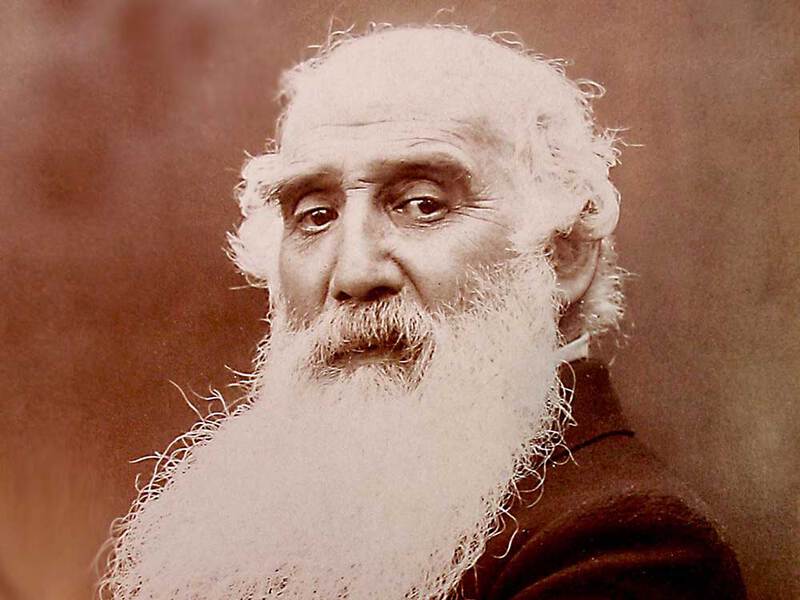
It was during this period that Gauguin came to know several prominent Impressionist artists, including Edgar Degas, Pierre-Auguste Renoir and Edouard Manet.
Some critics have compared Gauguin’s Impressionist works to the likes of Alfred Sisley and Berthe Morisot, stating that his paintings were of similar quality.

Gauguin was also an accomplished Impressionist sculptor, arguably worthy of competition with Edgar Degas (the leading impressionist sculptor).
Impressionist influence
Gauguin’s Impressionist period, which spanned for almost a decade, is vital for understanding his later development as an artist.
He delved deep into the French avant-garde, questioning the role of art in modern society and even the nature of the Impressionist movement itself. Whilst he grappled with these issues, the Impressionist works he produced were wide-ranging and highly original.
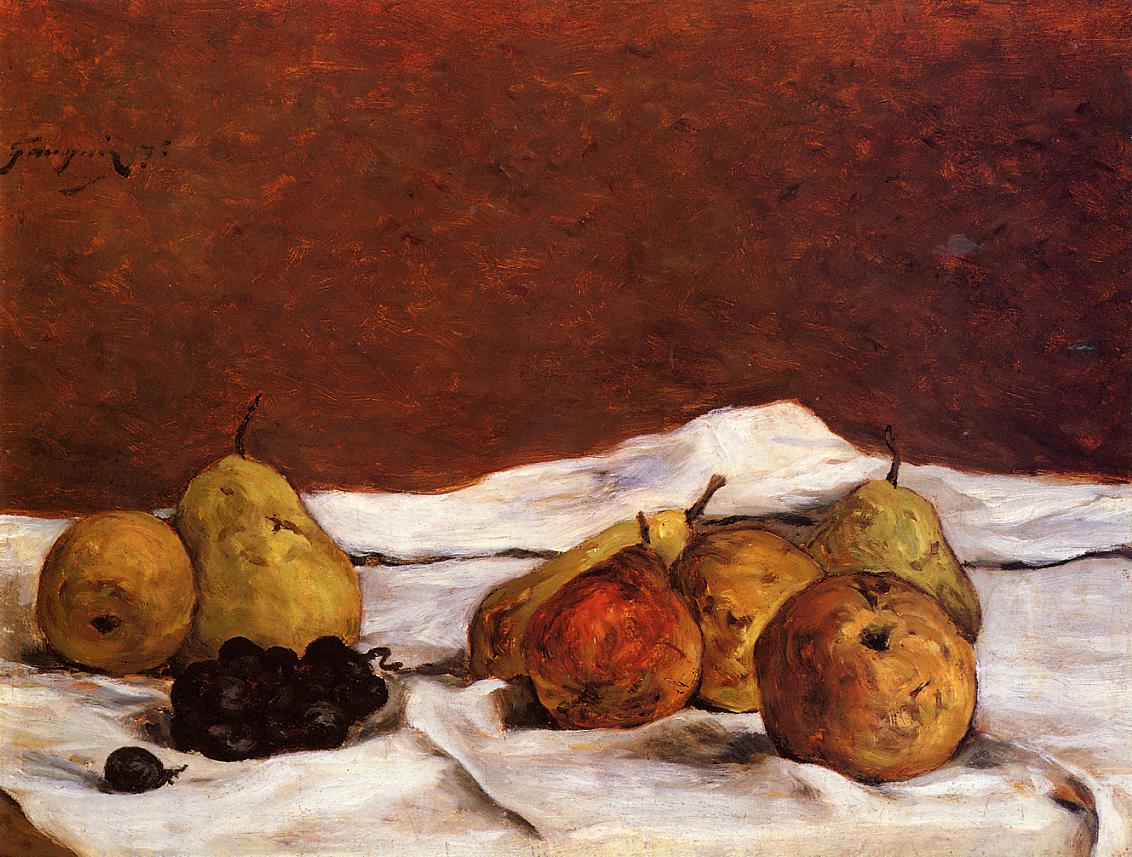
Airbrushed out of the history books?
Despite these close ties with Impressionism and amicable relationships with many prominent Impressionist artists, most critics have been hasty to downplay Gauguin's Impressionist period. They choose instead to focus solely on the post-impressionist development of his work in Brittany and French Polynesia.
In their book ‘Gauguin and the Impressionists’, Richard Brettell and Anne-Birgitte Fonsmark write,
“it is almost as if Gauguin were not actually Gauguin until he fled Paris for Brittany just after the closing of the final Impressionist exhibition”.
What Gaugin said
This erasure of his artistic beginnings was perhaps due to Gauguin’s own dismissal of his Impressionist oeuvre.
In describing his paintings to a collector in 1900, he listed the number of canvasses he had produced before adding,
“not counting a hundred or so from the beginning of my career.”
Evidence suggests that this hundred or so canvasses was actually much larger than Gauguin estimated, numbering around 220 paintings.
What's in a name?
It is also interesting to compare Gauguin’s embrace and rejection of Impressionism simply by looking at the titles of his works. His early paintings bear the descriptive titles common to the Impressionist movement such as ‘The Seine’ and ‘Portrait of M. Favre’.
In contrast, his later works wrestled with questions and emotional and philosophical statements like ‘Where do we come from?’ and ‘Why are you jealous?’. His method of painting also changed dramatically during his lifetime, from quickly painting a landscape or life model for a sense of immediacy, to creating paintings from a collection of different studies that were knitted together to create intricate symbolic works.
The truth may well be that Gauguin grew frustrated with the Impressionist movement because his works were overshadowed by the new leader of the avant-garde - Georges Seurat.
In his dissatisfied state, he went against the Impressionist movement, breaking off ties with Pissarro and criticising the Neo-Impressionists equally fiercely.
It is here that his story takes another turn ...
3. Gauguin and the Symbolist movement
Determined to attempt a career painting professionally, Gauguin spent several months in Brittany in 1886.
In Pont-Aven, he developed a Symbolist style of painting using flat, vibrant colours to capture the lives of the local Breton people. Symbolism sought to present subject matter in an idealised or romanticised way, as seen in works like ‘Four Breton Girls’ from 1886.
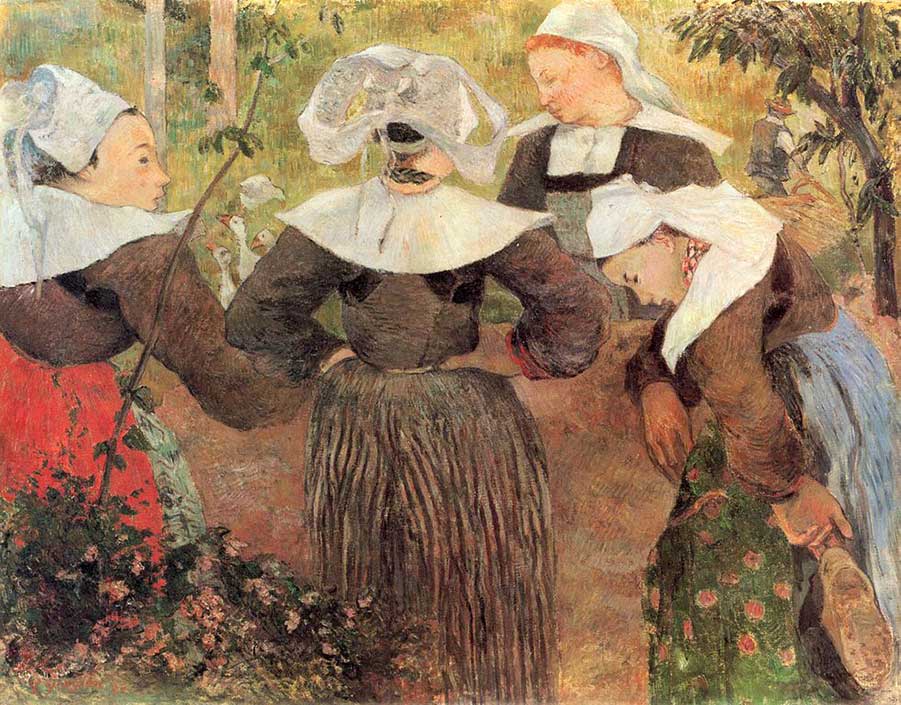
This painting depicts the female figures as though they are flowers or birds in a botanical painting, artfully arranged and with their silhouettes and profiles emphasised. At the same time, the painting features references to the natural world, in keeping with Gauguin’s Impressionist beginnings.
Van Gogh and Gaugin
In the late 1880s,Vincent Van Gogh made contact with Gauguin. Both artists showed the influence of Impressionism in their work but had developed distinctive styles, which suggested they held great potential.
In 1888, at Van Gogh’s invitation, Gauguin travelled to Arles to paint. He worked closely with Van Gogh, spending 63 days living with him in the infamous yellow house.
The men produced an enormous number of canvasses during this period, demonstrating their voracious search for a new style.
One of Gauguin’s best known works from this period is ‘Night Café at Arles (Mme Ginoux)’ from 1888.
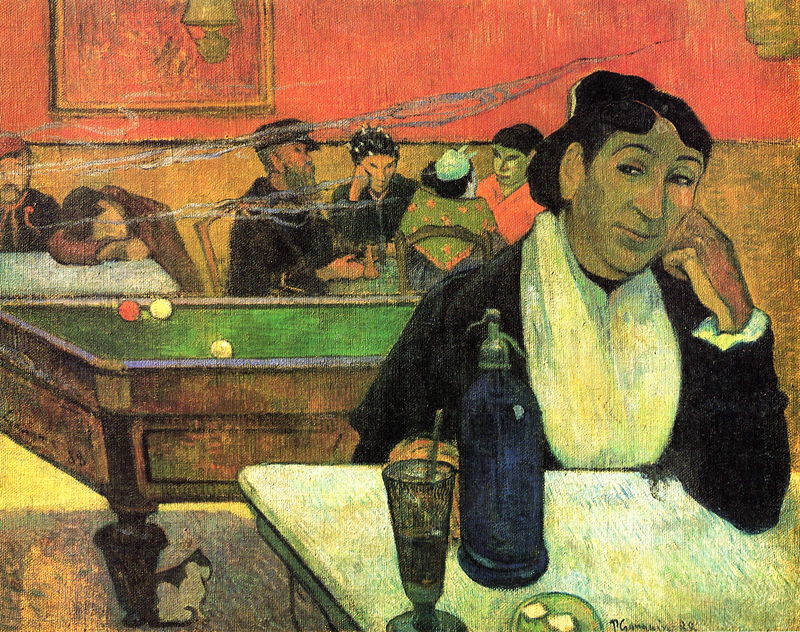
During this time, Gauguin suffered greatly from mental health issues and attempted suicide. Van Gogh was famously also struggling with his mental health and their partnership was extremely volatile.
Things came to a head in December 1888, when Van Gogh severed his left ear following a row with Gauguin.
Interesting fact...
But the story is even stranger than that: Van Gogh took the severed flesh to a brothel worker in Arles’ red-light district (she duly feinted); and when the police started to investigate, they arrested Gaugin for the attempted murder of Van Gogh.
Gaugin left Arles shortly after his release.
French Polynesia
In an extreme move, Gauguin decided to travel to French Polynesia in 1891 - this would be the culmination of his search for escape and a more ‘natural’ way of life.
It was in Tahiti, Punaauia and the Marquesas Islands that Gauguin began painting portraits of the local indigenous population, experimenting with the Symbolist style whilst incorporating aspects of Tahitian art into his aesthetic.
Paintings from this time include ‘Tahitian Women on the Beach’ from 1891 and ‘Two Tahitian Women’ from 1899. These paintings showed a move away from the Symbolist paintings he had been working on in France, adopting a more traditional portrait style.
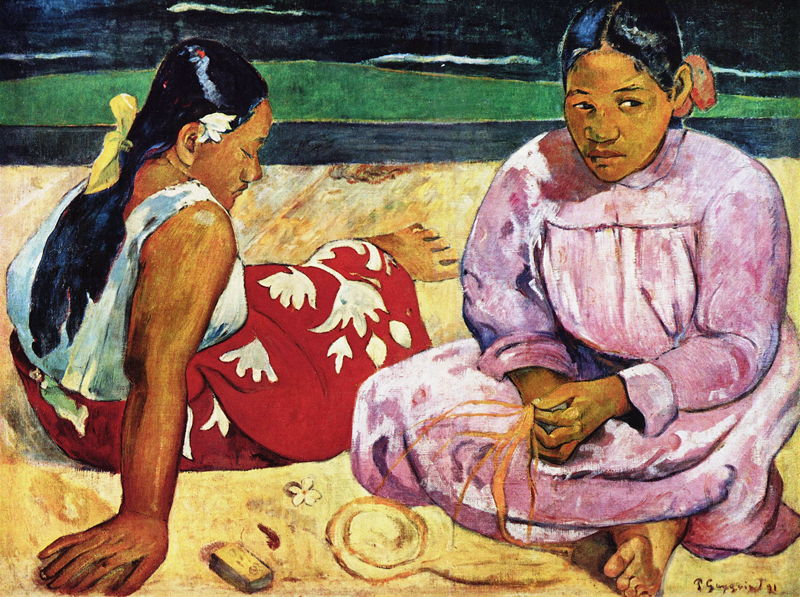
However, the figures, clothes and colours depicted in the portraits hint towards his deeply romanticised image of the individuals he met in Tahiti.
Many of the fabrics he used to dress his sitters were imported from Europe to fit with his fantastical compositions and he emphasised a highly sexualised and exaggerated image of the women he painted.
Spirit of the Dead Watching (1892) is an example of Gauguin's approach. The model is Tehamana, a 13 year old who Gauguin married in Tahiti.
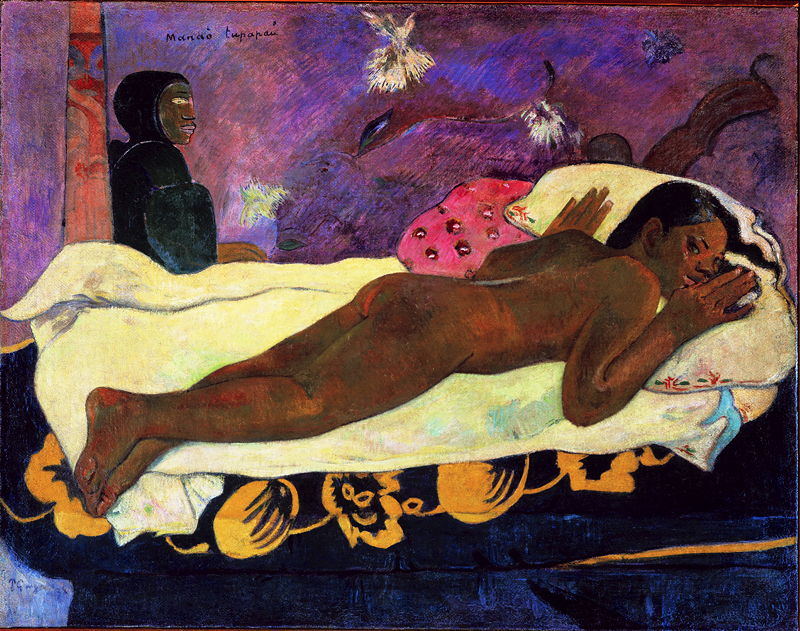
The Natural World?
Throughout his varied career, Gauguin maintained a focus on natural forms, using the lens of painting to meditate on the world around him and the meaning of life. He was fascinated with the idea of living in the most ‘natural’ way and this was what he sought when he travelled to the Pacific Islands.
Here's a picture of Gauguin's house in Tahiti.

In reality, Gauguin struggled to reconcile the image in his imagination with the world he found. Nonetheless, he endeavoured to construct an idealised world on his canvasses, consequently becoming a leading figure of what is now known as Primitivism.
This term is used to describe the Western romanticisation of less industrially-developed cultures and the belief that so-called ‘primitive’ peoples live closer to nature and are therefore more spiritually enlightened than Western society.
4. Gauguin’s legacy
Gauguin’s career would be short lived as he died in 1903 at the age of just 54.
His last major work was Where Do We Come From? Where Are We? Where Are We Going? (1897-98)
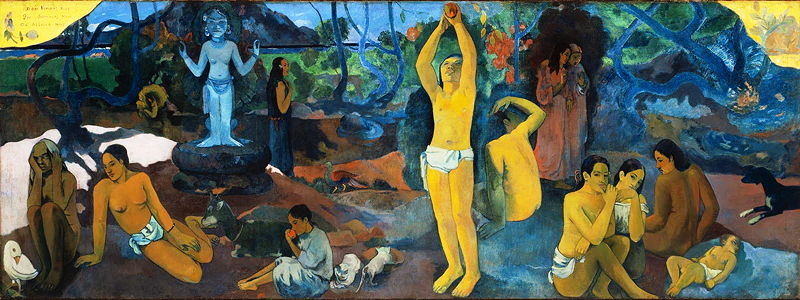
Learn more about this enormous work on out Top 10 Gauguin Paintings page.
Gaugin’s death
Gauguin died in Atuona, Marquesas Islands, French Polynesia.
It is known that Gauguin was suffering from syphilis, which he passed on to his three teenage Tahitian brides. His death has been linked to an overdose of morphine, which he would likely have been taking for the pain caused by the advanced stage of the disease.
Interesting fact...
Syphilis was a common cause of death in the 19th century. Edouard Manet also died from it, in 1883.
Gauguin died shortly before he was expected to begin a prison sentence for defamation against the governor of the Marquesas Islands, where he was living at the time.
Most controversial artist?
Since his death, Gauguin has gone on to become one of the most controversial artists of the 19th century - a proud boast as he is up against some tough contenders. Gustave Courbet, for example, was also very good at upsetting people. And Edgar Degas exposed himself as an anti-semite during the Dreyfus affair.
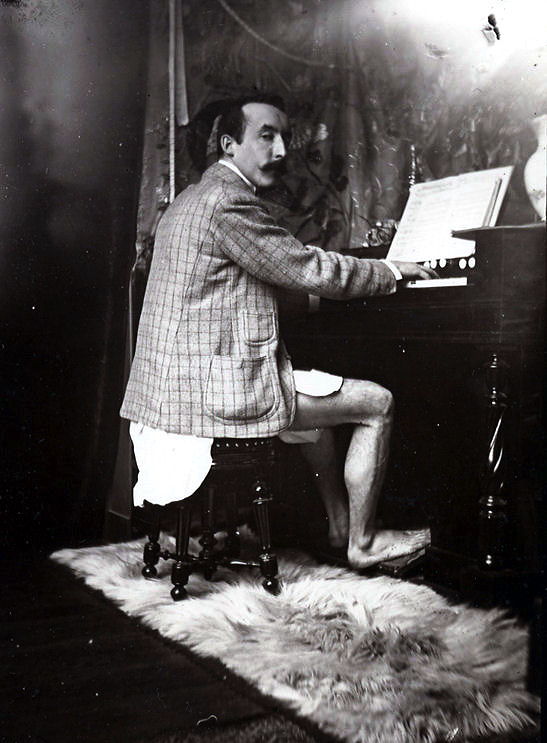
Gauguin led an extremely unusual life and his biography is filled with episodes that are surprising, intriguing and horrifying in turn. By contrast, the (remarkable) stories of prominent Impressionists like Monet and Renoir seem tame!
Gauguin lived in a time of great change in France and Europe but also a time of exploitation for many indigenous populations of newly colonised lands. As a result, his works speak to some extremely problematic racial and sexual myths that were perpetuated in the 19th and early 20th century and which Gauguin helped to fuel.
In his own words, he described how:
“I am trying to put into these desolate figures the savagery that I see in them and which is in me too […] I want to consult nature as well but I don’t want to leave out […] what comes into my mind.”
This perhaps best summarises Gauguin’s approach to his paintings in French Polynesia - he sought to combine the myth of the ‘savage’ with his own desire, whilst including some reference to his observations.
Gaugin’s ethics
Recent revisionist studies of Gauguin’s work have questioned his position as a colonial artist living and working in Tahiti and the ethical implications of his paintings. From his paedophilic relationships to his fabrication of the lives of the Pacific Islanders, there has been much debate as to his place in art history and the ethics behind contemporary exhibitions of his work.
To put it another way, Gauguin's story asks us this question:
"Is it okay to like the artwork produced by a bad person?"
Learn more on our Is it OK to like Gauguin's Art page.
Thanks to Post-Colonialist study on the impact of Gauguin’s work, many museums and galleries have begun using his paintings as a way of confronting the position of male artists throughout history and their role in shaping public perceptions of people and places.
The revisionist analysis of Gauguin’s work is an intriguing case study on the way in which art is now consumed and understood. In many ways, the context behind the artworks is as important as the works themselves, but this has not always been the case.
The last word
The controversy behind Gauguin’s legacy is perhaps the most enduring aspect of his career.
However, it also points to his influence as a Post-Impressionist artist. It is his revolutionary approach to colour, composition and subject-matter that has meant his artworks have endured long enough for us to question the context in which they were created.
What is also notable about Gauguin’s legacy is that the vast majority of profiles and biographies written about him that entirely ignore his early Impressionist works. This period has largely been wiped from history and Gauguin’s life seems to start from his time in Brittany and his Symbolist period.



